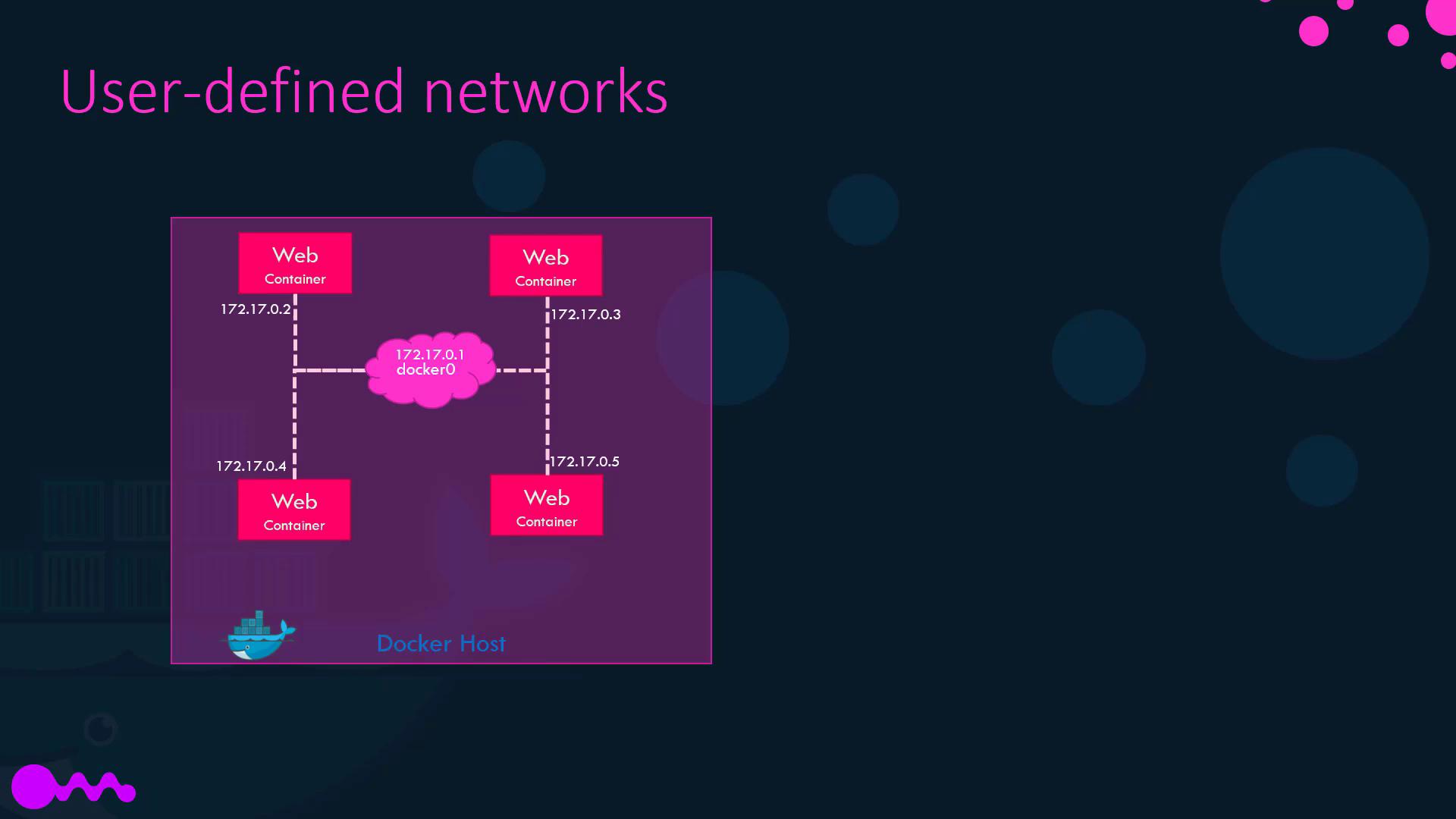Docker Certified Associate Exam Course
Docker Engine Networking
Docker Networking
Docker simplifies container networking by providing built-in networks and easy-to-use commands for creating custom networks. Whether you need isolated environments or seamless inter-container communication, this guide covers everything from default networks to user-defined bridges, inspection commands, and internal mechanics.
Built-in Docker Networks
Docker creates three networks upon installation:
| Network Name | Description | Typical Use Case |
|---|---|---|
| bridge | Default private internal network on the host | General container communication |
| host | Shares host’s network namespace—no isolation | High-performance networking, host apps |
| none | No network interfaces except loopback | Security-isolated or self-managed setups |
You can attach containers to any network using the --network flag:
docker run --network=<network_name> ubuntu
1. Bridge Network
The bridge network is Docker’s default. Each container on this network gets an internal IP (typically in 172.17.x.x). Containers on the same bridge can communicate directly.
Port Mapping
Expose container ports to the host with -p:
docker run -d -p 8080:80 nginx
This maps port 80 in the container to port 8080 on your Docker host.
Note
If you omit -d, the container runs in the foreground.
2. Host Network
Running with --network=host makes the container share your host’s network stack:
docker run --network=host ubuntu
Key points:
- No port mapping needed
- Ports in the container are the same as on the host
- Cannot run multiple containers on the same host port
Warning
Using the host network removes isolation. Only use this when you trust the container’s network behavior.
3. None Network
The none network disables all external interfaces, leaving only the loopback:
docker run --network=none ubuntu
Use this for maximum network isolation when <em>no</em> connectivity is desired.
Creating a User-Defined Bridge Network
Custom bridge networks let you isolate groups of containers and define subnets:
docker network create \
--driver bridge \
--subnet 182.18.0.0/16 \
custom-isolated-network
List all available networks:
docker network ls
Example output:
NETWORK ID NAME DRIVER SCOPE
dba0fb9370fe bridge bridge local
4d60768bc9 custom-isolated-network bridge local
6de6865ce1c6 docker_gwbridge bridge local
e29d81be47 host host local
mmrho7vb9rm ingress overlay swarm
d371b4009142 simplewebappdocker_default bridge local

Inspecting a Container’s Network Settings
To retrieve a container’s IP address and network details:
docker inspect <container_id_or_name>
Search for the NetworkSettings section in the JSON output:
"NetworkSettings": {
"Gateway": "172.17.0.1",
"IPAddress": "172.17.0.6",
"MacAddress": "02:42:ac:11:00:06",
"Networks": {
"bridge": {
"Gateway": "172.17.0.1",
"IPAddress": "172.17.0.6",
"MacAddress": "02:42:ac:11:00:06"
}
}
}
Tip
Use jq to filter output:
docker inspect <id> | jq '.[0].NetworkSettings'
Name-Based Container Communication
Docker’s embedded DNS (at 127.0.0.11) lets containers resolve each other by name:
mysql.connect(mysql)
Here, mysql refers to the target container’s name. No static IPs required.
Under the Hood: Namespaces & veth Pairs
Docker uses Linux network namespaces to isolate containers. Communication between a container and the host bridge relies on veth (virtual Ethernet) pairs:
- One end lives in the container’s namespace
- The other end attaches to the host bridge
This setup ensures both isolation and connectivity.
Links and References
Watch Video
Watch video content